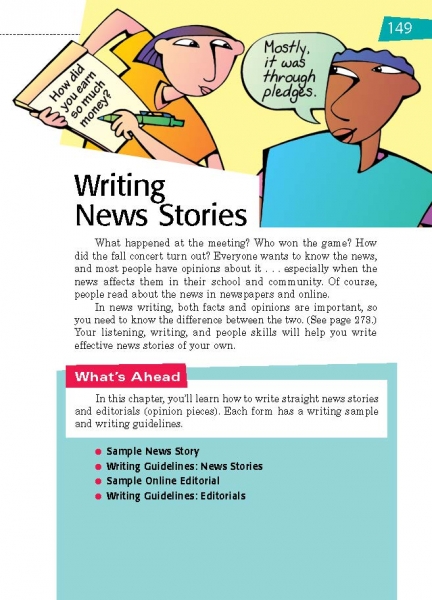Page 149 from

Start-Up Activity
Read and discuss page 149. Afterwards, refer to page 273 to make sure that your students understand the different between facts and opinions. Ask students to identify each of the following ideas as either stating an opinion or fact.
- Eighth graders in our school read The Outsiders. (Fact)
- The Outsiders takes place in a city in Oklahoma. (Fact)
- Ponyboy is my favorite character in the novel. (Opinion)
----------
- Our school’s soccer team won the last match, 2-1. (Fact)
- This was the best match of the year. (Opinion)
- Felix Mantilla scored both the goals. (Fact)
Think About It
“Keep your eyes open. Notice what is going on around you.”
—William Burroughs

Start-Up Activity
Read and discuss page 149. Afterwards, refer to page 273 to make sure that your students understand the different between facts and opinions. Ask students to identify each of the following ideas as either stating an opinion or fact.
- Eighth graders in our school read The Outsiders. (Fact)
- The Outsiders takes place in a city in Oklahoma. (Fact)
- Ponyboy is my favorite character in the novel. (Opinion)
----------
- Our school’s soccer team won the last match, 2-1. (Fact)
- This was the best match of the year. (Opinion)
- Felix Mantilla scored both the goals. (Fact)
Think About It
“Keep your eyes open. Notice what is going on around you.”
—William Burroughs

